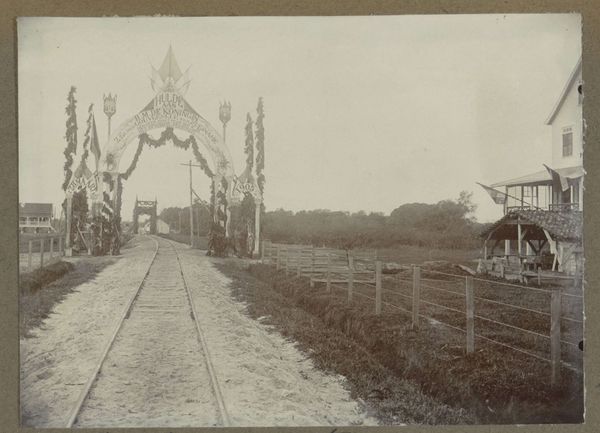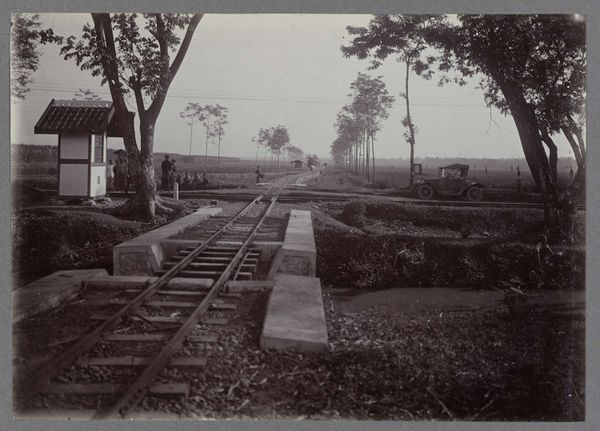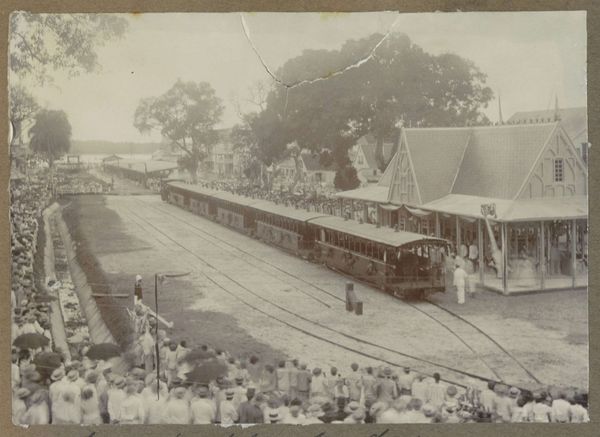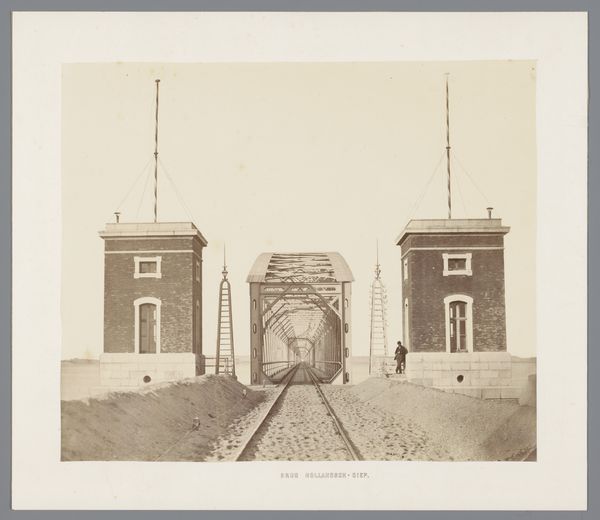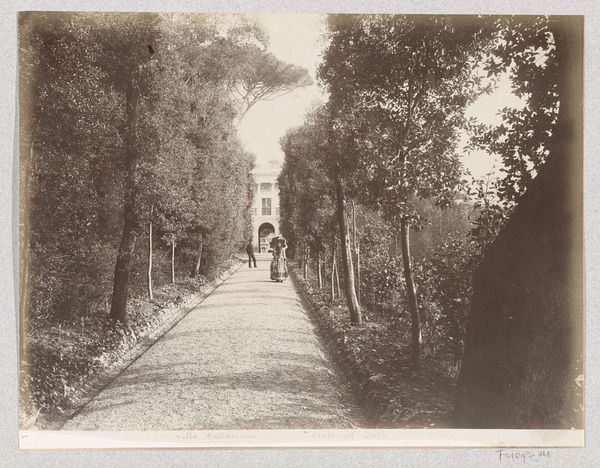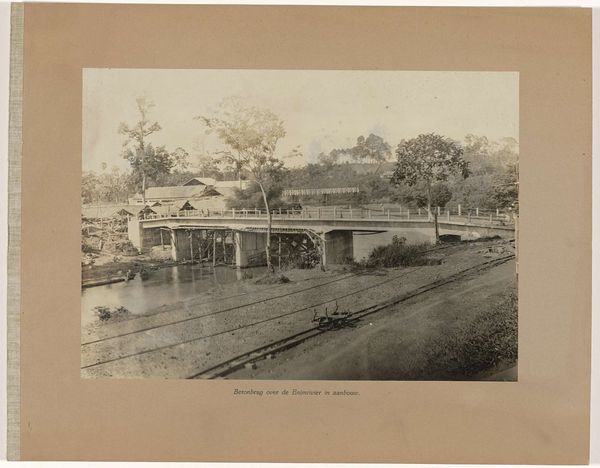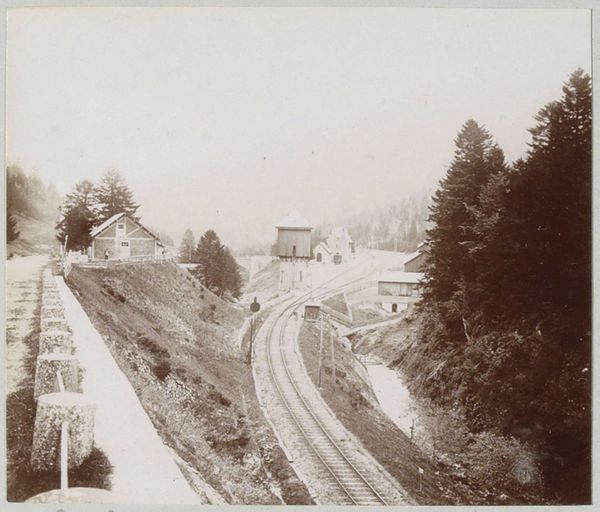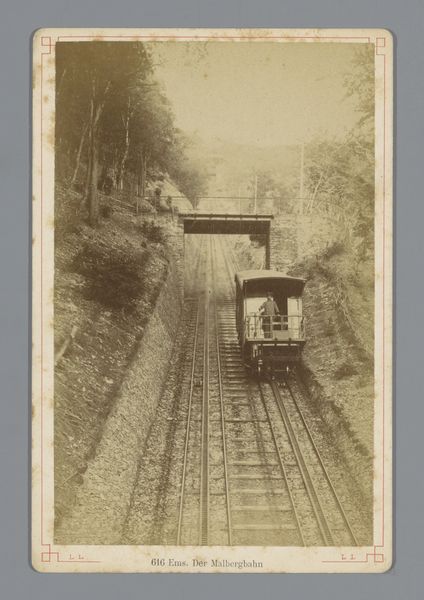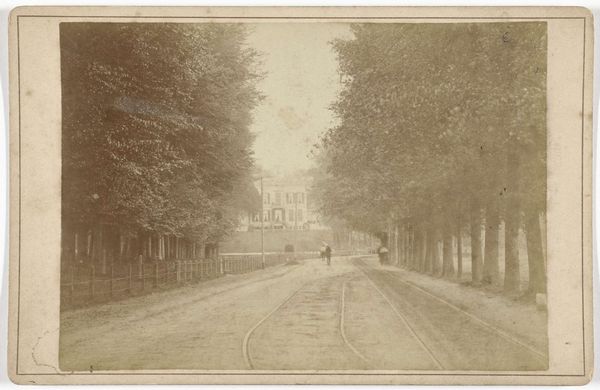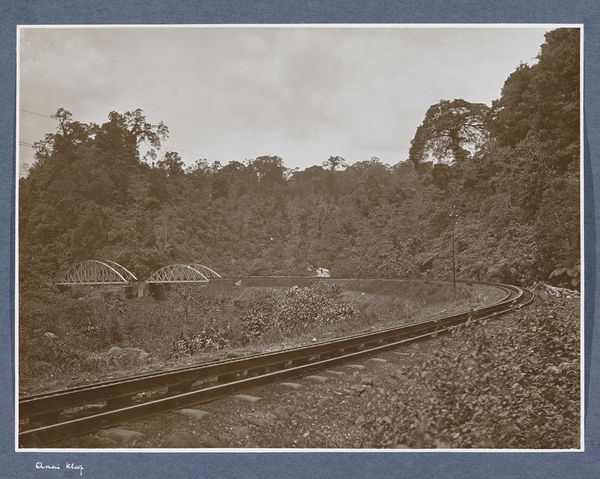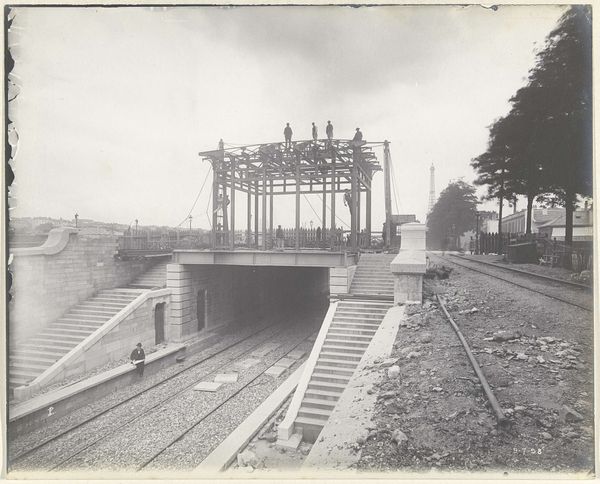
Erepoort in de Saramaccastraat te Paramaribo, opgericht ter gelegenheid van de opening van de Lawaspoorlijn (Landsspoorweg) op 28 maart 1905 c. 1905
0:00
0:00
print, photography, site-specific
# print
#
landscape
#
street-photography
#
photography
#
site-specific
Dimensions: height 90 mm, width 154 mm
Copyright: Rijks Museum: Open Domain
Eugen Klein captured this photograph of the ceremonial gate in Paramaribo on March 28, 1905, marking the inauguration of the Lawa Railway. The image presents more than just an infrastructure project; it’s a window into the complex social dynamics of early 20th-century Suriname, then a Dutch colony. The Lawa Railway was intended to tap into the interior's gold resources and facilitate economic development. But we might ask: development for whom? The gate itself, with its formal, European-influenced design, stands as a symbol of colonial power and the imposition of Dutch systems. It speaks volumes about the cultural and economic agendas at play. The railway’s construction involved significant labor, often under harsh conditions, reflecting the existing social hierarchies. Historical archives, colonial records, and local accounts can provide further insights into these power dynamics. By examining such materials, we can better understand the complex interplay between progress, exploitation, and cultural imposition, and the lasting effects on Surinamese society.
Comments
No comments
Be the first to comment and join the conversation on the ultimate creative platform.
